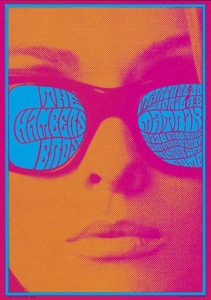 Underground culture also better know as counterculture is an anti-establishment phenomenon in the 1960s that developed in the UK then spread through the western world. From the Beatles to twiggy and everything in between, underground culture was everywhere.
Underground culture also better know as counterculture is an anti-establishment phenomenon in the 1960s that developed in the UK then spread through the western world. From the Beatles to twiggy and everything in between, underground culture was everywhere.
Hippies are one of the first things that come to mind what I think of the 1960 – 1970, however, it was not just about the flower power fashion that made them so iconic they were one of the most distinctive features of the decade.
The hippies made up no political subgroup of a large group known as the counterculture, however, it did not include just the hippie’s several groups criticised the development in American society. Groups such as New Left convinced the government didn’t consider or dinary people, African Americans, The Anti-Vietnam war movement, equal rights, civil rights and also the women’s rights movement.
dinary people, African Americans, The Anti-Vietnam war movement, equal rights, civil rights and also the women’s rights movement.
The hippies are the third broad group of the dissenter to mainstream American values, like New Left, hippies were critical of the society that their parents accepted. Politics they were the game played by conventional adults the hippies wanted no part of election lobby protest and other common ways to bring social change, however, hippies wanted a new society based on peace love and pleasure.
part of election lobby protest and other common ways to bring social change, however, hippies wanted a new society based on peace love and pleasure.
In the sixties and the underground culture, drugs played a part in the art movement and in the hippie community, the drugs used among hippies was a controversial part of their lifestyle, many insistence’s it was an essential part of rejecting the establishment. LSD the most well-known drug of the era was available legal until 1966. Leary, a profession from Harvard, experience of taking LSD was “incredible acceleration and intensification of all sense and all mental processes” this translated into the art world and in a style called psychedelic art. Psychedelic art is an art or visual display inspired by the psychedelic experience and hallucinations known to follow the intake of LSD.
The art movement made an impact in the sixties it was used within different art forms and its bright graphics shapes made it stand out as one of the most colourful eras in history despite what was going on within the world.
information:
http://ic.galegroup.com/ic/uhic/ReferenceDetailsPage/ReferenceDetailsWindow?failOverType=&query=&prodId=UHIC&windowstate=normal&contentModules=&display-query=&mode=view&displayGroupName=Reference&limiter=&currPage=&disableHighlighting=true&displayGroups=&sortBy=&search_within_results=&p=UHIC:WHIC&action=e&catId=&activityType=&scanId=&documentId=GALE%7CCX3441300020&source=Bookmark&u=j071909004&jsid=70771243f9f31aa0ce39bf5531cc7b7a
images :
http://jpdubs.hautetfort.com/archive/2010/08/01/l-epoque-psyche-pop-60-s-70-s.html
http://www.comicsreporter.com/index.php/briefings/commentary/4440/
